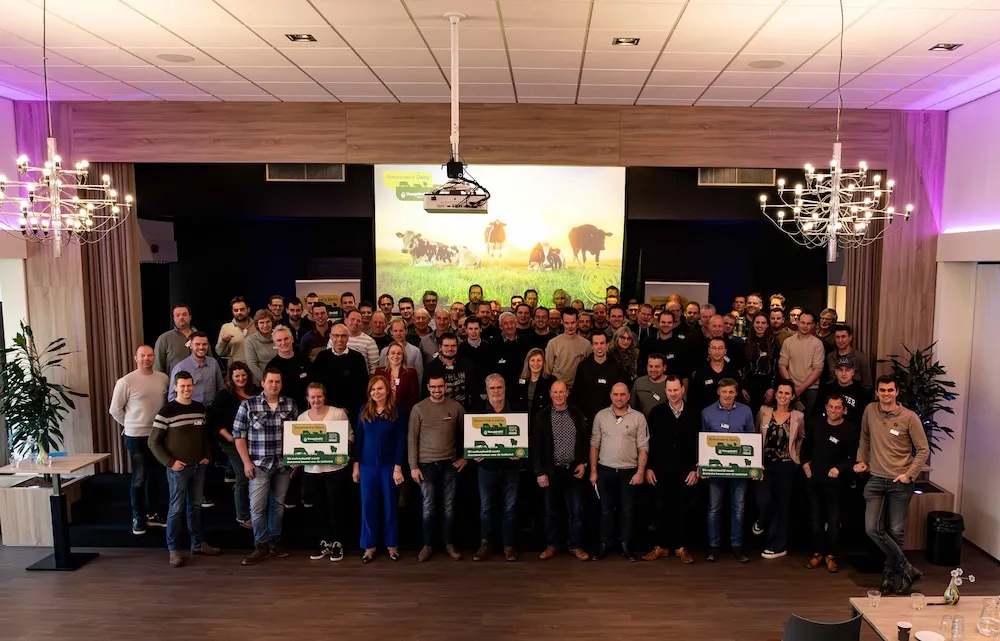
Additional scale-up
‘The programme has been running since 2022 and with all the knowledge and experience gained by the current participants and the guidance team, we have now opted for a broader approach to the programme,’ says Marjolein de Kreij, director Milk Supply at Vreugdenhil Dairy Foods. "The core remains the same, namely to work within the programme towards a 50% lower CO2 footprint of milk in 2030 compared to 2018. The first 15% reduction is a fact. And with this additional scale-up, we can take even bigger steps."
Customisation
Based on learnings and experiences, the approach has been further refined this year. "Every dairy farm is unique and customisation remains the key. Operations are different everywhere and so are the farm conditions, such as location, number of cows and soil type. That is why we combine individual coaching with workshops where participants learn from each other," De Kreij said. New from 2025 is a modified reward system: where, for example, every gram of CO2 reduction is financially rewarded, but also, for example, a higher lifespan. This premium rises to €5 per 100 kg of milk.
Number of participants Tomorrow's Dairy almost doubledThis is in addition to Vreugdenhil's existing premiums and stimulates the entrepreneurship of the participating dairy farmers. This is also emphasised by Klaas Cuperus, Sustainability Manager, Nestlé Netherlands: "Stimulating sustainability also means rewarding entrepreneurs who take that step. With the expansion of Tomorrow's Dairy and the renewed reward system, we are giving perspective to making CO₂ reduction feasible and encouraging regenerative agriculture. In this way, together we are accelerating the transition to future-proof dairy farming."
Workshops
All new participants start their participation with an individual business plan, drawn up with the help of an expert from PPP-Agro advies. Subsequently, all participants take part in workshops at least twice a year. During these sessions, for example, the use of the Kringloopwijzer is explained, but also proper measures in practice are shown, such as the possibilities to reduce greenhouse emissions on the dairy farm with grass clover, soil improvement or feed adjustments. In total, the set as almost 20 different measures, underlined by Wageningen University. These options can be deployed depending on the type of farm. New innovations also continuously add to and recalibrate this set.
Ambition
"During the kick-off meeting on 3 February, the new group of participants already got a good idea of the options for their business. Now the important thing is to use this upscaling to put all the reduction possibilities into practice as much as possible," Marjolein de Kreij concludes. Vreugdenhil Dairy Foods' ambition is to add even more participants to the programme until 2030.
About Tomorrow's Dairy
Together with Nestlé, Vreugdenhil is investing over €50 million in the Tomorrow's Dairy programme (formerly Low carbon farming). Its goal is to reduce greenhouse gas emissions by 50 per cent by 2030, compared to 2018, by applying the principles of regenerative farming, among other things.
More information: www.tomorrowsdairy.nl